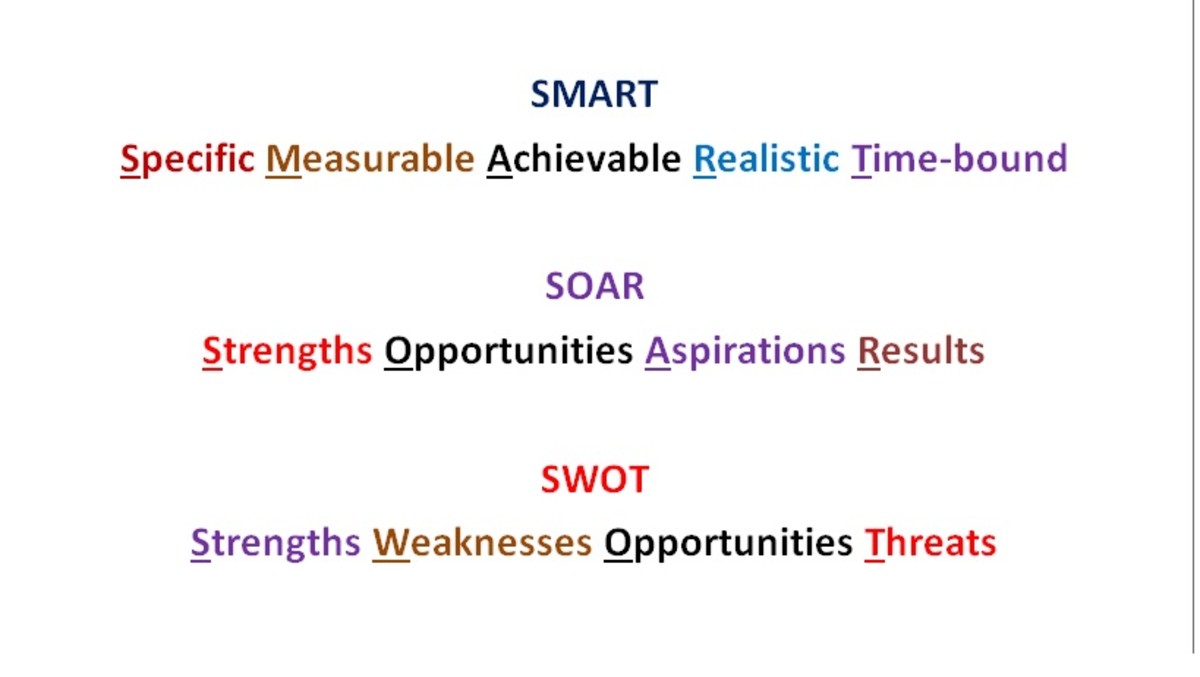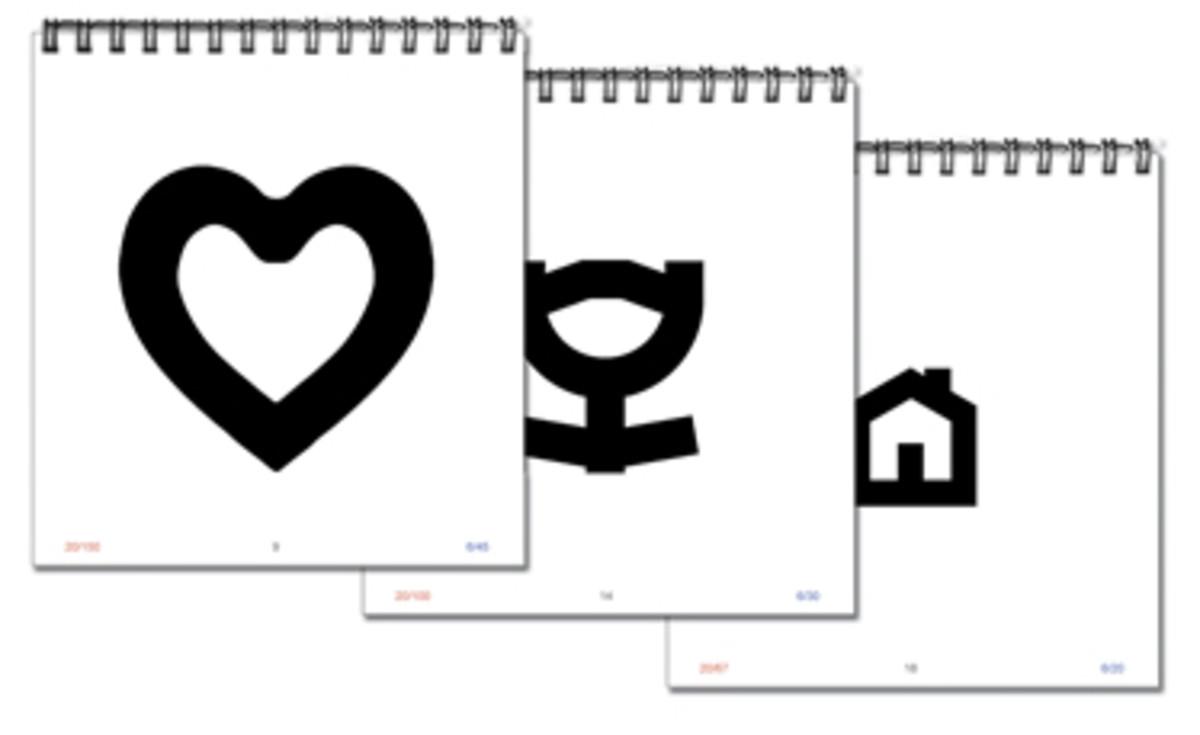Strategic Design: How to Create Outstanding Business Results

Design & Stretch To Create Business Success
"Those who do not create the future they want, must endure the future they get." — Draper L. Kaufman, Jr.
There is a world of difference between strategic design and strategic planning. Strategic design is the future-oriented process of envisioning goals, desired outcomes and the results you want to create.
Strategic design allows people to have a clear, visceral understanding of their end results that their planning will help bring into being. With strategic design, they can have an image in their minds. They can have word pictures and real pictures. They can have models, mock-ups, and prototypes.
One dramatic example of strategic design is Pixar's "tent-pole" process. Instead of trying to explain the premise of a new film to potential investors, Pixar creates a 20-minute film that "shows" the concept, including characters, sets, costume design, music, etc…. This way, everyone has the same vision in mind. If a high tech company want to create something that no one's seen before, a model, or even a video of the product can get everyone on the same page.
Even a story will work. After the executives I work with craft a word picture "vision" of their results, I ask them to write a 2 to 5-page short story describing how a customer will access their product or service, and how employees will interact with customers, each other, and management. It's amazing how often the stories differ; sometimes dramatically. Then, through the strategic design process, they can craft the vision until they all agree on the same design.
Compare strategic design to the conventional strategic planning process.
“All too often,” a VP of Operations for a small, high-tech client told me, “strategic planning turns out to be neither for us."
When I asked, "Why?" he replied, "Strategic planning takes too long, it's too formal, things change, plans get out of date, and the process is aborted. Or worse, ignored. The expensive consultant-generated plans gather dust on a shelf, and people keep doing what they've always done.”
Tragically, he added, “But, hey, every years we go ahead and do strategic planning because we don’t know what else to do.”
Why Most Strategic Plans Don't Work
"Plans are useless," said U.S. general and president, Dwight D. Eisenhower, "but planning is indispensable."
He was talking about preparing for battle, but also used the same thinking as President. The process of planning prepares us to take action, but it does not prescribe the exact action to take -- especially in changing situations. Plans such as the VP (above) complained about are inflexible. They assume reality will remain as it was when the plan was drafted. But reality changes, and the plans quickly become out of date.
You wouldn't build a house with a just a set of plans and no previous design, would you? But most businesses skip the truly strategic design phase, and jump right into planning. But without design, there is nothing to guide their plans—except problems!
This is why planning guru Henry Mintzberg argues that, "most strategic planning is neither." Rather it is low level, tactical programming, the results of which look more like an elaborate "to do" list than a useful guide to strategic thinking and action.
"Strategic thinking, he says, "is about synthesis. It involves intuition and creativity." MIntzberg's form of thinking results in a "vision of direction" that guides existing processes, and helps invent new ones. Sounds very much like Strategic Design to me.
Today, so-called "strategic planning" is in danger of degenerating into empty ritual. It merely provides an illusion of control in the face of change.
Organizations like Chrysler, GM, and other manufacturers, all with once-ample resources, established reputations and formalized ‘strategic’ planning, fall on hard times, while upstarts like Toyota, Whole Foods, and Starbucks—with lesser reputations, fewer resources, and a new kind of planning, do well and thrive.
Why? What lessons about planning can be learned from the failure of so-called strategic planning? And how can they be applied to any sized business or organization?
Strategic Planning As Problem Solving
Instead of starting with strategic design, the typical strategic planning session begins with an "environmental scan" or an "issue session." Both attempt to assess the problems, adversity, and threats that affect the company, or might affect it in the future. Then, planners do two things that negatively affect their outcomes.
First, they focus on problems. They plan to get rid of (or relief from) what they don't like and don't want. The focus on all the bad stuff, and use it as the basis for their planning.
But, research by Ronald Lippitt [1] showed that, “listing and solving problems depresses groups.” He saw that when groups focus on problems and issues, their "solutions" are aimed at seeking relief from anxiety, not on producing lasting results. Worse, the relief they seek is was due to the anxiety they create by listing and focusing on problems.
This kind of problem-driven strategic planning does not work. Focusing on problems depresses people. It saps their energy, and prevents them from taking action
Recognizing this, Lippitt began focusing planners on an early form of strategic design. He had them envision "images of potential"—envisioning what could be, instead of lamenting what was. Working with Edward Lindaman, the planning director for the Apollo moon mission, Lippitt showed that a vision of a desired future (a result) was much more powerful motivator than problem solving.
Conventional Strategic Planning Focuses on "Fit"
The second counter-productive thing that conventional strategic planning does is to seek a “fit” between resources and aspirations.
In this approach, leaders set realistic goals based on their current capacity. They identify what they think they can achieve, with the resources they have at hand. Then, having set severely limited goals, they lay out strategies and tactics to achieve them.
Sounds reasonable, but, does this kind of conservative strategic planning produce competitive results? Not like strategic design does!
“As ‘strategy’ has blossomed," argues Gary Hamel in the Harvard Business Review, "the competitiveness of Western companies has withered.”
Outstanding businesses, he says, approach strategy from a fundamentally different perspective.” Instead of strategic planning, success comes from what Hamel calls “strategic intent,” or what I call Strategic Design.
Strategic Planning as Vision-Driven Strategic Design
Truly strategic planning that is preceeded by stratetic design helps business owners clarify what they want to achieve, and design their outcomes, before they plan.
Strategic design also helps them assess current reality, relative to their desired goals. And it helps them shape good decisions, take effective action, learn from our experiences, correct mistakes, craft effective outcomes. Instead of relying on conventional strategic planning to guide their business actions, consistently successful companies focus on strategy as stretch and leverage.
They set seemingly impossible goals for their size and resources, and then use resourcefulness, innovation, and creating to leverage limited resources into outstanding results. Hamel argues that, to succeed, you want to set up a “chasm” between your ambition and your resources. Stretch! he urges.
That might sound crazy, or counterintuitive, especially if you lean to conventional models of planning. But stretch goals are keys to success, especially in changing times. Jim Collins, author of Good To Great: Why Some Companies Make the Leap and Others Don't, calls stretch goals BHAGS--Big Hairy Audacious Goals.
BHAGs, he says, are big daunting goals--business mountains that you want to climb. They are clear compelling goals that people "get" right away. "Like the 1960's NASA moon mission," he says, "a BHAG captures the imagination and grabs people in the gut."
As crazy as it might sound, Hamel says that, “creating stretch between resources and aspirations is the single most important task senior management faces.” Success, he says, arises from consistency of effort, generated by focused, shared vision throughout the organization.
Strategic Leverage Comes from Dynamic Management Processes
But strategic design is not just wild ambition. And successful BHAGs are set not with bravado, but rather with passion and understanding. Strategic design includes stretching for visionary goals, and more.
As well as stretch goals, strategic design includes a dynamic management process that:
• Focuses the organization on a vision that includes essential success criteria;
• Motivates employees by clearly communicating the value of the desired result;
• Makes room for individual and team members to contribute;
• Sustains enthusiasm by updating operational definitions as circumstances change; and
• Uses clear visions of big results to consistently guide resource allocation.
Businesses can falter if they fail to do any or all of these things well. But many fail simply because they fit instead of stretching. They trim their ambition to match their resources. Instead of visionary BHAGs, they set small, uninspiring, but "realistic" goals.
Eroding Goals
An old saying urges us to, "set no small goals, for the lack the power to stir our souls." Indeed, that's one of the problems with conventional strategic planning. The goals the planners set do not engage the passions and hope of the employees.
There is a place for small, realistic goals in business planning, within the context of stretch goals. If set as stepping-stones toward stretch goals, they can be effective. But by themselves, they can fail. Purposefully trimming goals to match resources can cause both to erode.
Peter Senge, author of The Fifth Discipline: The Art & Practice of the Learning Organization, says that eroding goals are a major barrier to business success. Organizations that trim ambition find themselves without leverage, at the mercy of circumstances, and with a tendency, Senge says, to “drift toward low performance.”
Realistic goals must be part of any stretch-driven design strategy, but, alone, they lead to mediocre results. Or worse, to the death of the business.
[NOTE: Strategic Design is not just for businesses. It is also an excellent way to create results in all areas of work or life. For example, here's an excellent article on using Strategic Design to build successful websites.]
The Capacity to Create
Senge draws on the work of Robert Fritz, an organizational design expert whose “structural” approach to Strategic Design, Industry Week magazine said, “may be the next revolution in management.”
Fritz’s approach to design, and creating results, bears a remarkable similarity to Hamel's strategic intent. Senge says that Fritz's approach," forms the cornerstone in my work to help leaders and managers deal productively with complexity and change.” Business success, he says, comes from "organizational mastery": a company's capacity to create desired results -- independent of their current capacity or circumstances. And organizational mastery must be based on personal mastery!
“Learning organizations,” says Senge, “must be committed to the development of each individual’s personal mastery—each individual’s capacity to create what matters.” Integrating personal and organizational capacity to create gives Strategic Design its exceptional power to create real and lasting success. Fritz, author of The Path of Least Resistance and The Path of Least Resistance for Managers, is an expert on the creating process, in individuals and business.
“Creators,” he told executives at an Organizational Summit in Chicago, “whether they are individuals or entire organizations, start at the end. They start with a vision, a picture of the result they most want—clear enough that they will recognize it when they create it.”
Successful creators lay out visionary goals, even when they lack the needed skills or resources to achieve them. Creating—like truly strategic planning—is about learning, leveraging, innovating, discovering, and inventing what you need to create the results you desire. “You make up the path as you go,” said Fritz.
But vision by itself is not sufficient. Once a vision is clear, creators objectively assess current reality in relation to that vision (or visions). The key is to assessing reality is to be objective about where you are, relative to what you want, and where you want to be.
“Be scrupulously honest,” says Fritz. “Making things look better than they are, or worse, distorts reality. Don’t judge reality, just describe it.” Don't, for example, fudge your books. You may feel successful in the short run, but it'll cause you grief in the long run.
When vision and current reality are clear, there will always be a gap between them. This is not a problem. The gap (Hamel's "chasm") gives rise to a useful, creative tension that can guide and energize your actions. It also drives out emotional tension that can get in the way of successful action.
Creative tension, like strategic intent, is formed by a discrepancy between what you want and what you currently have. This tension gives creators leverage and power. Tension, in any structure, seeks resolution. It wants to move. Think of a stretched rubber band; it is energized, ready to move. You can use that tension, and the energy it contains, to power your actions in the direction of desired results.
When you hold vision and reality in mind, together, you also set up an organizing framework—a container for creating. You form a structure in which you, and your business, will experience a tendency to move. Successful creators know how to orchestrate tension so energy and action consistently move towards desired results.
Oscillating Structures
Structure influences behavior. But, not all structures move toward final results.
A rocking chair, for example, is structured so, when you push it in one direction, it rocks back in the other direction. A rocking chair is an oscillating structure. Energy put into such structures merely flows back and forth. Good for rocking, but not so good for going from where you are to where you want to be.
Businesses with oscillating structures experience a pattern of better, then worse, then better…. They back and forth, but don’t progress toward results. On a graph, it would look like a series of ups and downs, with no upward trend. Putting energy into rocking chair structures fails to lead to real and lasting results.
Advancing Structures
Unlike a rocking chair, a sailboat has an advancing structure. If steered properly, energy put into this structure will move you toward a desired destination. Businesses designed as advancing structures greatly increase their chances of consistently producing high-value results. Designing organizations so they act more like sailboats pays off in real and lasting results.
A Powerful Framework to Create Results—With Whatever You Have!
A key to strategic design is to ensure that structure supports intent. To produce real and lasting results in an oscillating business, you have to change the underlying structure to one that advances toward desire results.
Advancing structures provide a powerful framework for business design. Effective—truly strategic—planning always flows from good design and great visions.
Start the strategic design process by stretching for a clear vision.
"Separate what you want from what you believe is possible or realistic,” says Fritz. Don't limit your goals to what you can achieve with your current resources. Envision and go for what matters—regardless of where you are, or what you have. Set visionary goals that stir your soul, and the souls of your employees!
When your goals/visions are clear and compelling, ground those goals in current reality. Set up, and work with, creative tension. Then experiment, invent, build, innovate—create, and adjust. Learn from your mistakes. Build momentum. Keep creating until reality matches your vision. Then celebrate!
You do not have to give up strategic planning, but you have to do much more strategic/creative thinking to make it work. I suggest you put your planning into a vision-driven organizing framework like creative tension, or strategic intent. Then use that framework to leverage your limited the resources and capacity into great results, one step at a time.
Vision, passion, and aspirations are not add-ons to business planning. They are the point of what you do. They give planning and action their power. They are the focal point of strategic design, the attractor that pulls all the parts and people in a business into a concerted, purposeful team, consistently creating high-level results.
Ask yourself, “What do we really have to lose?”
When we ran the idea of strategic design as vision-driven stretch and leverage by the VP quoted above he was initially skeptical. “We’ve never done anything like this before,” he said.
Then he laughed, and said, “What the hey! What we do now just creates confusion and conflict. Maybe, with this approach, we can create the products, services, and profits we most want. It’s worth a try.”
----
[1] Marvin Weisbord, Discovering Common Ground [Berrett-Koehler] San Francisco 1992
[2] Ibid.
-----
If you enjoyed this hub, please "share it" (below) and give me a "thumbs up".
I'd also appreciate it if you would leave a helpful comment.
For more of Bruce's writing, please visit his HubPages Profile.








